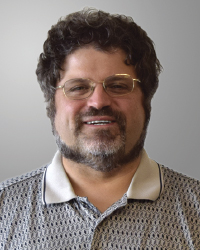 Historically, when scientists and clinicians looked through a traditional microscope, they saw only a thin 2D plane of a sample. This was unhelpful for understanding complex cellular processes or the relationships that various systems had to each other. While it was possible to cast various wavelengths of light deep into brain tissue, for example, researchers had to contend with the shallow and deep elements within the tissue contrasting and causing blur. So it is welcome news that a team of researchers from Boston University developed a technique that can simultaneously acquire images at various depths using a standard microscope. The method is based on a z-splitter prism. The prism splits the light into several paths, with increasing optical path delay to the sensor. The paths are then captured by a camera — without any overlap and in a single shot.
Historically, when scientists and clinicians looked through a traditional microscope, they saw only a thin 2D plane of a sample. This was unhelpful for understanding complex cellular processes or the relationships that various systems had to each other. While it was possible to cast various wavelengths of light deep into brain tissue, for example, researchers had to contend with the shallow and deep elements within the tissue contrasting and causing blur. So it is welcome news that a team of researchers from Boston University developed a technique that can simultaneously acquire images at various depths using a standard microscope. The method is based on a z-splitter prism. The prism splits the light into several paths, with increasing optical path delay to the sensor. The paths are then captured by a camera — without any overlap and in a single shot.
In our cover story for this issue, Sheng Xiao writes that — with the aid of a method called extended-volume 3D deconvolution — an algorithm takes blur into account, resulting in higher contrast and stronger resolution. In the future, not only could this technique identify the content of tissue, but it could also record fast-moving processes such as neural activity. Read more about these exciting developments.
Also in this issue, on the subject of capturing quality information at depth, Jakub Pospisil, Thomas Huser, and Judith Heidelin elaborate on developments in superresolution microscopy. Machine learning and image restoration are aiding in obtaining 3D images with cellular resolution. The authors explore the converging technologies that are making this happen.
Thomas Rasmussen writes that the door is opening for disease detection on many levels, through the use of diode array spectrometers. While filter-based instruments can only detect one wavelength, systems designed around a diode array spectrometer can use multiple wavelengths, allowing for the identification of many viruses and diseases. Find out about the advancements that companies are working on in this field.
In Biopinion, Jeff Harford covers how fluorescence is helping to guide modern therapeutics to new levels of effectiveness in the area of disease detection. NIR allows for high signal versus background, he writes, so that protein expression is accurate, regardless of the subtlety of the detection. Clinicians are missing out on the value of this method, he argues here.
Shifting the focus to the broader environment, Rob Morris and Yvette Mattley discuss the use of spectrometry and sensing devices to revolutionize the farm-to-table process — in the field, as produce is sorted, when it is transported, or anywhere in between. To maximize harvests, real-time measurements of factors such as browning in apples can allow farmers to make valuable adjustments before produce hits the shelves to be purchased by a consumer. Read about these technologies that are becoming integral to farming equipment and sorting lines.
Enjoy the issue!
